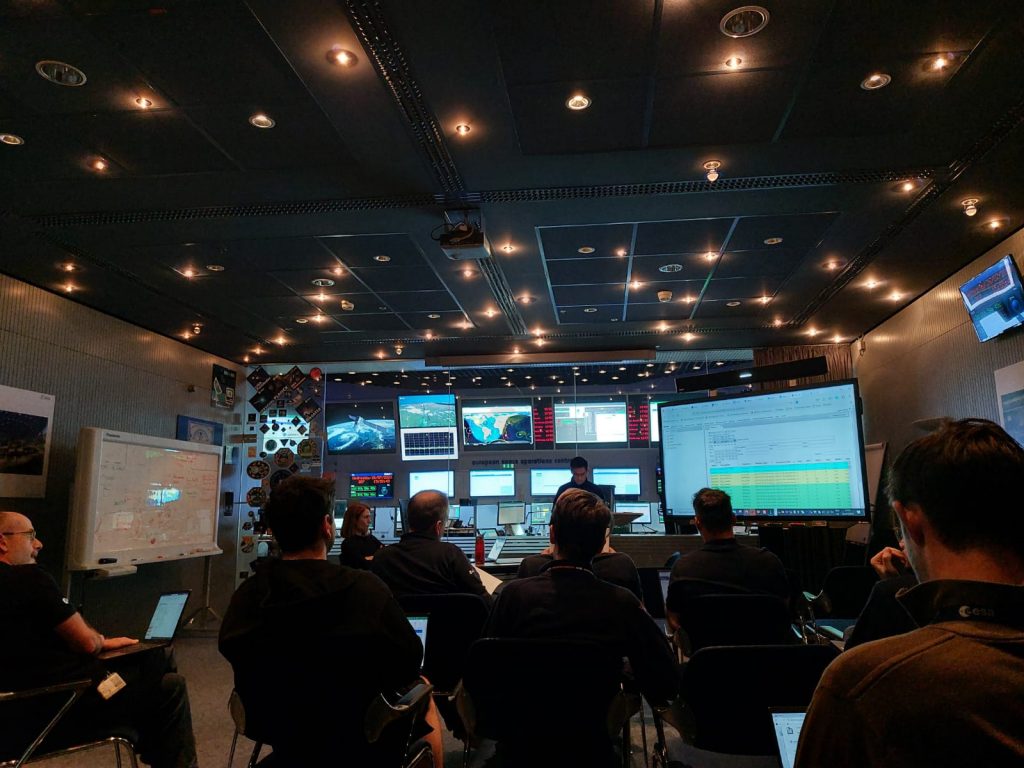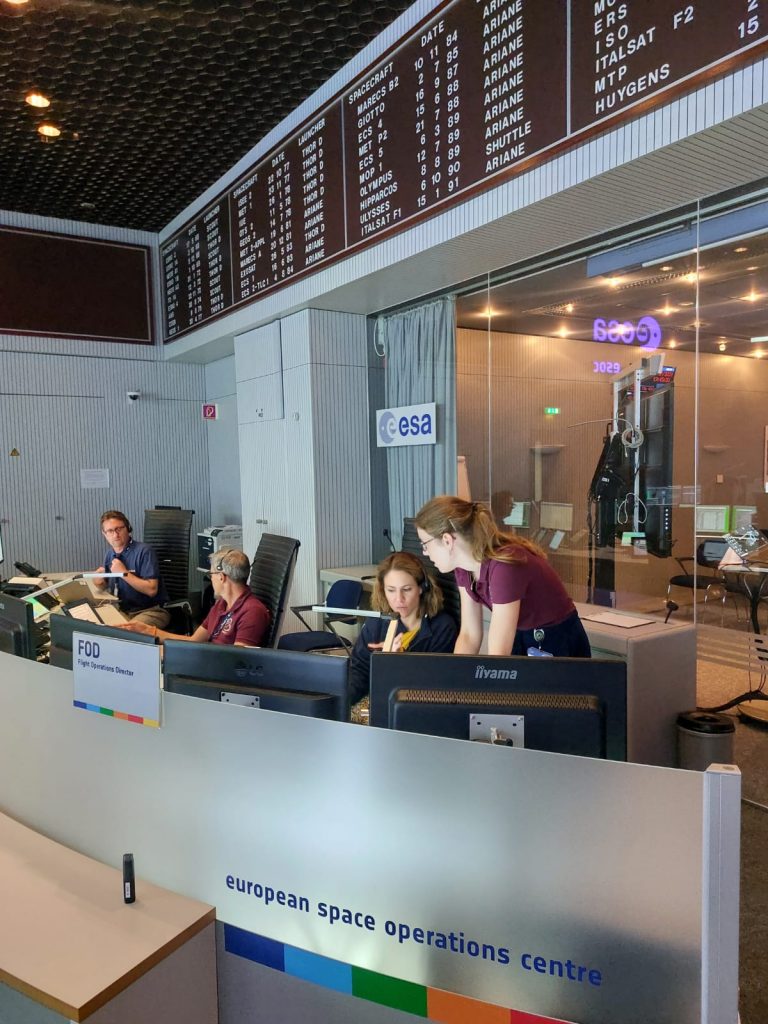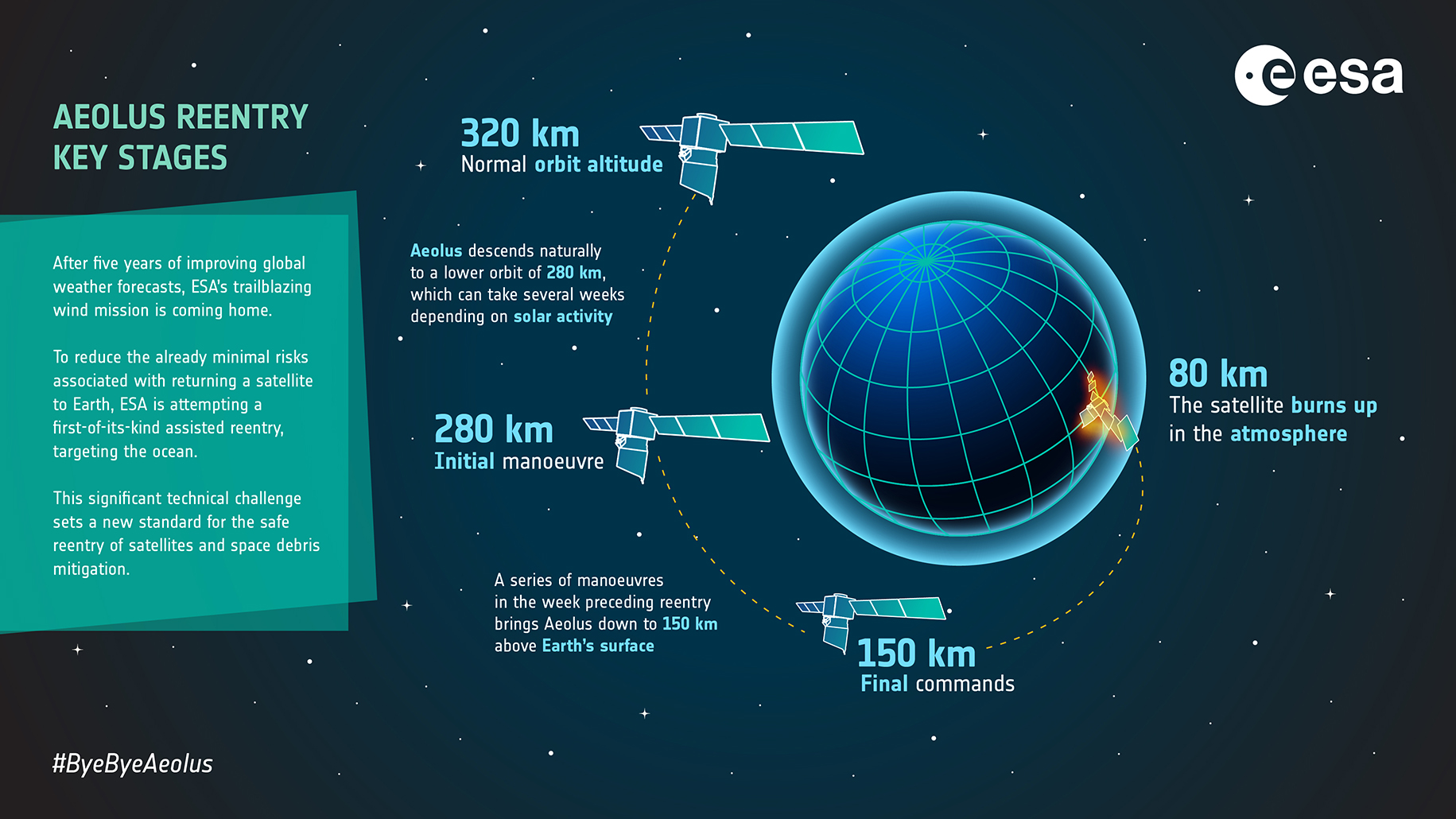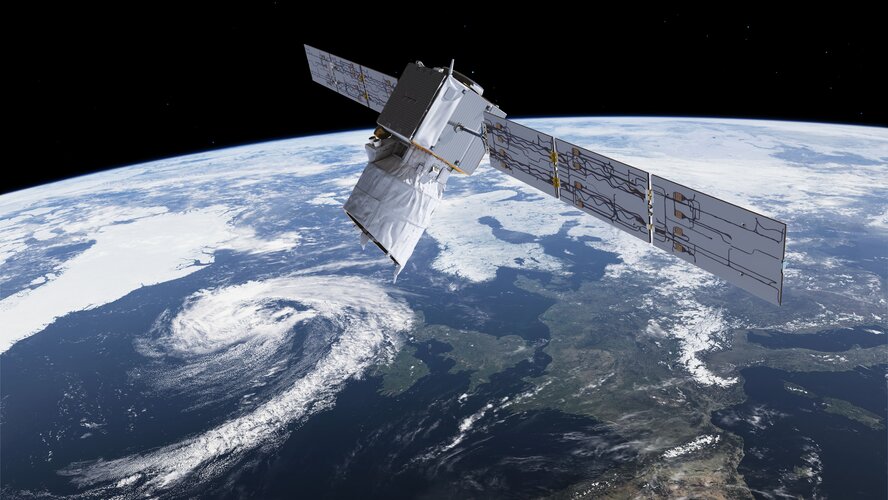*This post provides live updates from ESA’s Main Control Room in Darmstadt, Germany, as engineers and operators guide Aeolus home. New updates will be added at the top of the page, so check back daily for the latest.*
Day 4: four maneouvres bring Aeolus dramatically closer to home
27 July 2023, 11:09
We’re GO! Stay tuned for the first manoeuvre this afternoon.
27 July 2023, 10:25
At many stages throughout the reentry operations, there are “GO/NO GO checkpoints” when the teams assess the situation and decide if it makes sense to continue.
The assisted reentry manoeuvres have been designed to come together to improve the – already very low – risk as Aeolus descends, but checkpoints are moments they could be aborted, returning Aeolus to a natural reentry.
We’re waiting this morning for the next check point, and will let you know as soon as we can if we are GO for 150 km.
Day 3: the calm before Aeolus gets warm
26 July 2023, 21:58 CEST
Like yesterday, teams have spent the day preparing for the series of manoeuvres to follow. Tomorrow, the plan is to bring Aeolus down from an altitude of 250 to 150 km: the largest fall in the shortest period since the mission was launched.
Orbiting at 150 km is very low indeed. Aeolus was not made for this. The spirit at Mission Control is determined, excited, and a little tired. This week has been a long time coming.
Join us tomorrow, for an important day.

Day 2: between two manoeuvres
25 July 2023, 18:15 CEST
Two days were set aside in the operations planning, this Tuesday and Wednesday, in case anything unexpected occurred as Aeolus performed yesterday’s large, low-orbit thruster burn.
With the success of the first manoeuvres, teams at mission control have today been preparing for the next – a series of four thruster firings planned for this Thursday.

D
ay 1: first manoeuvre tests large, low-altitude thruster firing
24 July 2023. Manoeuvre #1 successfully completed!
The first Aeolus reentry manoeuvre has been successfully performed – the largest thruster firing in the mission’s five years in orbit, and more than three times the size of those executed during routine operations.
Today’s thruster burns, one large and one small, in numbers:
Targeted altitude change: 280 – 250 km
Total burn duration: 37 minutes 24 seconds
Total estimated fuel consumption: ~ 6 kg

The main objectives were to lower the satellite in orbit, and check how it would behave when performing a large manoeuvre and at very low altitudes. Low-altitude operations are complex, with Earth’s atmosphere and a greater gravitational pull dragging at the satellite.
While the ultimate goal is for the spacecraft to burn up in Earth’s atmosphere during reentry, teams need to keep it functioning long enough that they can continue to send up commands and control it on its path.
Remember, Aeolus was not designed for this ending. It was ‘meant’ to naturally fall in an uncontrolled reentry – its propulsion system and fuel reserves were not designed to allow the satellite to be controlled down to the required altitudes for a fully controlled reentry.
With this campaign, ESA engineers and operators are pushing the satellite to the limits of what it can do. The success of this first manoeuvre bodes well for the rest of the campaign.
The reentry: where and when?
After completing its mission, Aeolus has been falling from its operational altitude of 320 km since 19 June.

Operators at ESA mission control in Germany have been keeping a close eye on Aeolus. As soon as it reaches 280 km on Monday 24 July, using the last of Aeolus’ fuel, the first of several critical manoeuvres will be performed to steer ESA’s wind satellite slowly back to Earth.
The final manoeuvre is scheduled for Friday 28 July, when a final command will guide Aeolus home from an altitude of 150 km to just 120 km. Then, the satellite will reenter.
At around 80 km, most of the satellite will burn up, but a few fragments may reach Earth’s surface.
Aeolus returns: why?
Having exceeded its planned life in orbit, the 1360-kg Aeolus satellite is running out of fuel. Having ensured that enough fuel remains for a few final manoeuvres, ESA’s spacecraft operators will bring Aeolus back towards our planet’s atmosphere for its inevitable demise.

They will aim the mission towards the ocean, further reducing the very small chance that fragments could cause harm should any reach Earth’s surface.
If successful, the assisted reentry makes the already very small risk to life from these fragments 42 times smaller.
(The general risk from reentering satellites is already very low. For example, the risk of an individual being hit by a piece of space debris is approximately three times lower than the risk from a falling meteorite.)
This is the first assisted reentry of its kind and sets a precedent for a responsible approach to reduce the ever-increasing problem of space debris and uncontrolled reentries.
Get more information, here.



